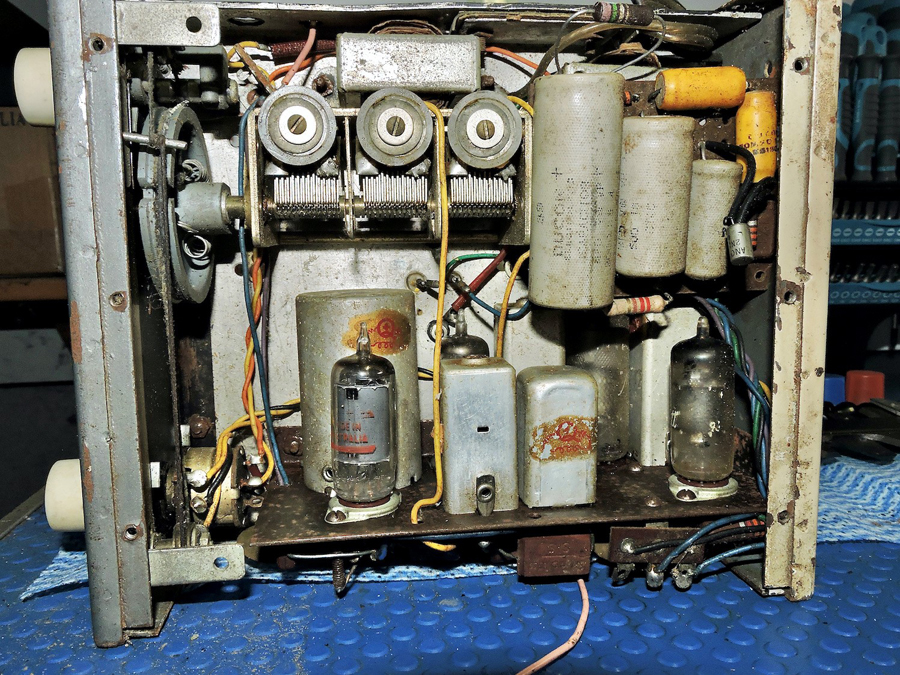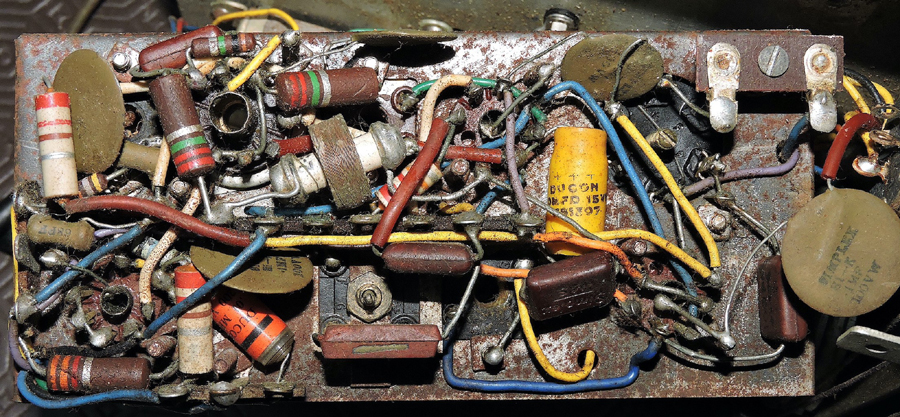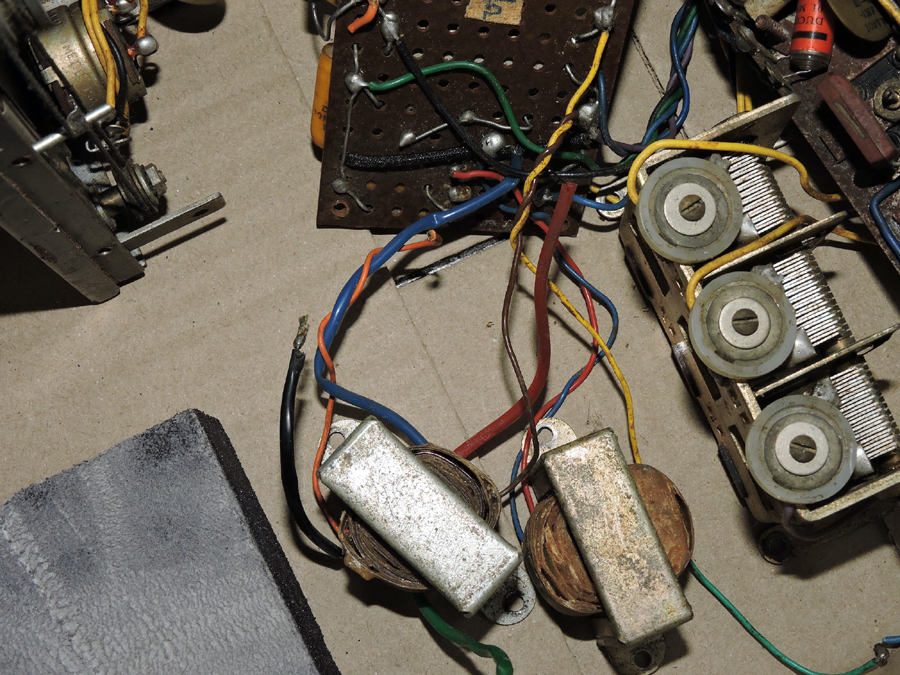Tech Talk
Forum home - Go back to Tech talk
|
Car Radio Build from Radio Television and Hobbies about 1959...1960
|
|
|
Return to top of page · Post #: 1 · Written at 5:20:44 PM on 5 March 2022.
|
|
|
|
Location: Geelong, VIC
Member since 12 July 2018 Member #: 2266 Postcount: 47 |
|
Hi Guys, Its a long shot, but here goes I built a car radio from Radio Television and Hobbies in 1959, 1960. Not sure of year |
|
|
Return to top of page · Post #: 2 · Written at 8:56:45 PM on 5 March 2022.
|
|
|
|
Location: Cameron Park, NSW
Member since 5 November 2010 Member #: 770 Postcount: 426 |
|
This is the 1959 Karset, described in the June 59 issue, with an article on the installation in the July 59 issue. |
|
|
Return to top of page · Post #: 3 · Written at 9:28:24 PM on 5 March 2022.
|
|
|
|
Location: Melbourne, VIC
Member since 2 October 2019 Member #: 2392 Postcount: 278 |
|
On another note, how long were valve/transistor hybrid sets available? |
|
|
Return to top of page · Post #: 4 · Written at 9:28:32 PM on 5 March 2022.
|
|
|
|
Location: Melbourne, VIC
Member since 2 October 2019 Member #: 2392 Postcount: 278 |
|
On another note, how long were valve/transistor hybrid sets available? |
|
|
Return to top of page · Post #: 5 · Written at 11:08:07 PM on 5 March 2022.
|
|
|
|
Location: Wangaratta, VIC
Member since 21 February 2009 Member #: 438 Postcount: 5650 |
|
Tended more to be in car radios, lots more noise compared to a valve especially, when used with a complimentary NPN in push pull. |
|
|
Return to top of page · Post #: 6 · Written at 6:43:17 PM on 6 March 2022.
|
|
|
|
Location: Geelong, VIC
Member since 12 July 2018 Member #: 2266 Postcount: 47 |
|
Thankyou so much Guys, I'll get Brad to post a picture  |
|
|
Return to top of page · Post #: 7 · Written at 11:37:29 PM on 6 March 2022.
|
|
|
|
Location: Wangaratta, VIC
Member since 21 February 2009 Member #: 438 Postcount: 5650 |
|
Now one has to be a bit cautious here. The hybrid radios normally had a "spark plate". The early NASCO (Firestone tyre & Rubber) and the Universal (Astor) Neg & positive ground & 6V /12V Models were all Valve. |
|
|
Return to top of page · Post #: 8 · Written at 9:46:19 PM on 7 March 2022.
|
|
|
|
Administrator
Location: Naremburn, NSW
Member since 15 November 2005 Member #: 1 Postcount: 7580 |
|
Photo uploaded to Post 6. ‾‾‾‾‾‾‾‾‾‾‾‾‾‾‾‾‾‾‾‾‾‾‾‾‾‾‾‾‾‾‾‾‾‾‾‾‾‾‾‾‾‾‾‾‾‾‾‾‾‾‾‾‾‾‾‾‾‾‾‾‾‾‾‾‾‾‾‾ A valve a day keeps the transistor away... |
|
|
Return to top of page · Post #: 9 · Written at 9:55:12 PM on 7 March 2022.
|
|
|
|
Administrator
Location: Naremburn, NSW
Member since 15 November 2005 Member #: 1 Postcount: 7580 |
|
Document uploaded to Post 2. ‾‾‾‾‾‾‾‾‾‾‾‾‾‾‾‾‾‾‾‾‾‾‾‾‾‾‾‾‾‾‾‾‾‾‾‾‾‾‾‾‾‾‾‾‾‾‾‾‾‾‾‾‾‾‾‾‾‾‾‾‾‾‾‾‾‾‾‾ A valve a day keeps the transistor away... |
|
|
Return to top of page · Post #: 10 · Written at 4:27:39 PM on 8 March 2022.
|
|
|
|
Location: Geelong, VIC
Member since 12 July 2018 Member #: 2266 Postcount: 47 |
|
|
|
|
Return to top of page · Post #: 11 · Written at 6:42:08 PM on 18 March 2022.
|
|
|
|
Location: Geelong, VIC
Member since 12 July 2018 Member #: 2266 Postcount: 47 |
|
Hello everyone,   |
|
|
Return to top of page · Post #: 12 · Written at 8:03:51 PM on 18 March 2022.
|
|
|
|
Location: Wangaratta, VIC
Member since 21 February 2009 Member #: 438 Postcount: 5650 |
|
It is interesting to note that there are two different forms of spray gun. The thin lacquer ones tend to be the same as that old fly spray, only with a constant air supply and more knobs to control air flow and the width of the pattern; plus orientate the pattern to horizontal or vertical. |
|
|
Return to top of page · Post #: 13 · Written at 11:27:03 AM on 9 April 2022.
|
|
|
|
Location: Geelong, VIC
Member since 12 July 2018 Member #: 2266 Postcount: 47 |
|
On another note, how long were valve/transistor hybrid sets available, BurntOutElectronics asked ? |
|
|
Return to top of page · Post #: 14 · Written at 9:37:00 AM on 11 April 2022.
|
|
|
|
Location: Oradell, US
Member since 2 April 2010 Member #: 643 Postcount: 835 |
|
Back in the day it was uncertain if transistors could be made that could function on RF frequencies. Or at least be cheap enough. So these 12V plate voltage vacuum tubes were developed for car radios. There's plenty of current to be had from the car battery and alternator system for the heaters. So heater current draw was not issue there, but it would be in a battery portable radio. 12V plate voltage tubes also means you don't have to have vibrator driven high voltage power supplies. And you use the slow power transistors to drive the speaker. |
|
|
Return to top of page · Post #: 15 · Written at 11:08:29 AM on 12 April 2022.
|
|
|
|
Location: Melbourne, VIC
Member since 2 October 2019 Member #: 2392 Postcount: 278 |
|
Wa2ise, I'm curious about these valves. |
|
|
You need to be a member to post comments on this forum.
|
|

Sign In

Vintage Radio and Television is proudly brought to you by an era where things were built with pride and made to last.
DISCLAIMER: Valve radios and televisions contain voltages that can deliver lethal shocks. You should not attempt to work on a valve radio or other electrical appliances unless you know exactly what you are doing and have gained some experience with electronics and working around high voltages. The owner, administrators and staff of Vintage Radio & Television will accept no liability for any damage, injury or loss of life that comes as a result of your use or mis-use of information on this website. Please read our Safety Warning before using this website.
WARNING: Under no circumstances should you ever apply power to a vintage radio, television or other electrical appliance you have acquired without first having it checked and serviced by an experienced person. Also, at no time should any appliance be connected to an electricity supply if the power cord is damaged. If in doubt, do not apply power.
Shintara - Keepin' It Real · VileSilencer - Maintain The Rage
